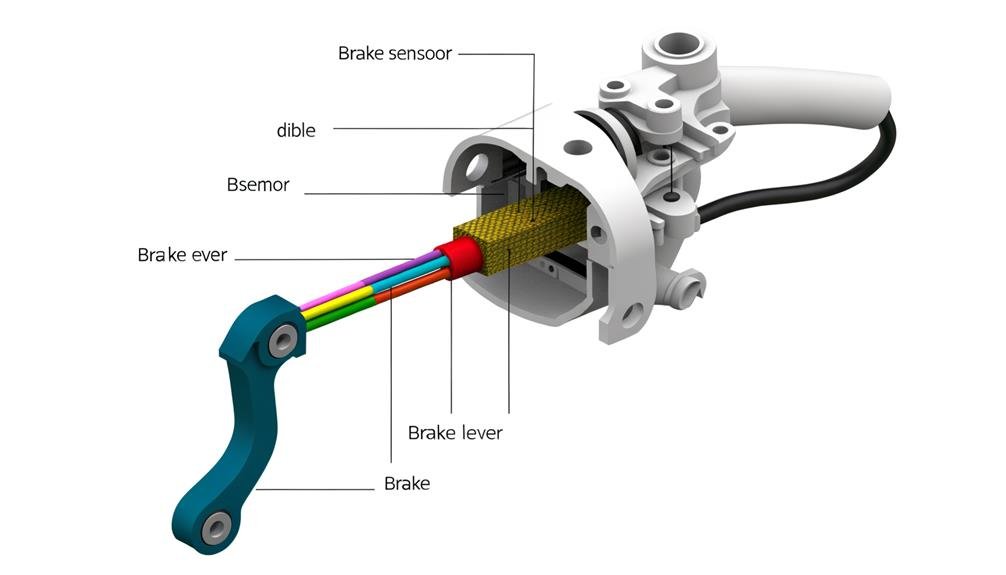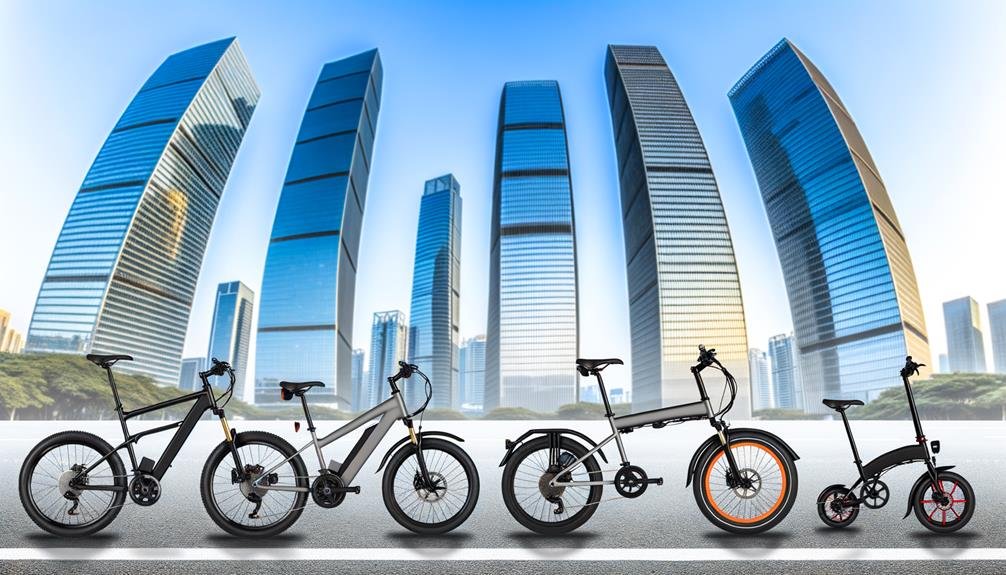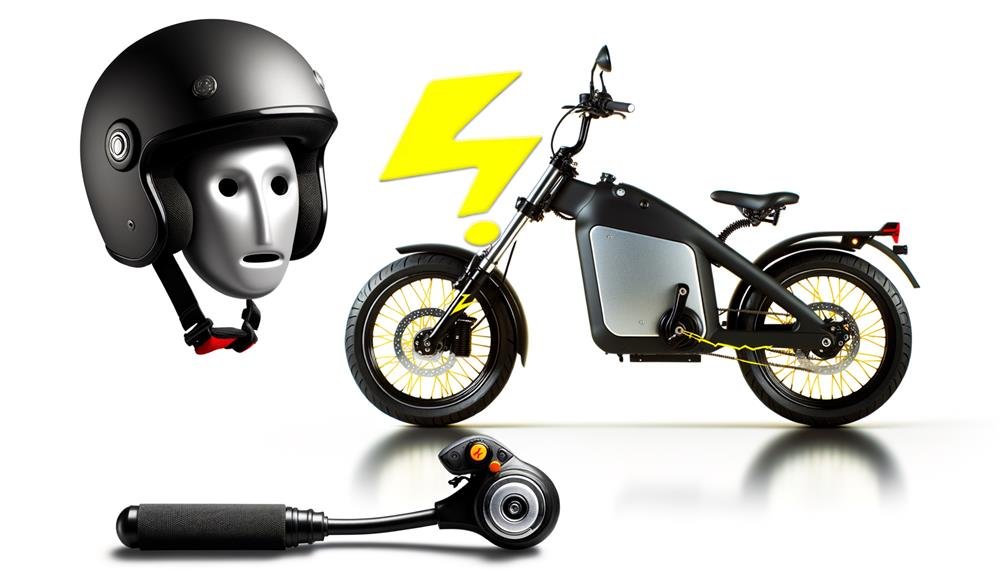Charles Miller is a veteran bike enthusiast with over 12 years of experience dealing with bikes as a mechanic. Despite immense love and expertise for...
Last weekend, while enjoying a leisurely ride on my electric bike along the city's scenic bike path, I was struck by how quickly and smoothly my ebike responded when I suddenly had to brake for a squirrel darting across my path.
This got me thinking about how exactly the brake sensors on my ebike work to ensure such efficient stopping. To put it simply, these sensors act as a bridge between the brake levers and the bike's motor, but there's more to it that goes beyond this basic understanding.
Intriguing, isn't it? Let's dive into the nitty-gritty of how these crucial components function and why they're an essential feature on every electric bike.
Key Takeaways
- Ebike brake sensors play a crucial role in ensuring a smooth transition from motor assist to pedal power.
- There are different types of ebike brake sensors, including mechanical, magnetic/Hall Effect, hydraulic, and Reed switches.
- When the rider applies the brakes, the sensors detect it immediately and send a signal to the motor to cut the power.
- Brake sensors are important for safe and controlled braking, preventing sudden stops and reducing strain on the brakes.
Understanding Ebike Brake Sensors
Diving into the world of Ebike brake sensors, we quickly realize their pivotal role in ensuring a smooth transition from motor assist to pedal power. As an ebike enthusiast, the understanding of how the brake sensors work will draw you closer to your beloved machine.
The brake sensors on an ebike are an essential component that cuts off power to the motor the moment the brakes are applied. They're like the secret agents sending a signal to halt the motor, ensuring a smooth transition to pedal power. Imagine you're maneuvering through a crowded bike path, and suddenly need to brake. That's when these sensors spring into action, providing a seamless switch to pedal power.
These sensors are normally closed switches that open when you press the brake lever, grounding the signal line from the controller. This stops the controller from sending control signals to the motor. It's like they're whispering to the motor, 'Hey, the brakes are on, it's time for you to take a break!'
Understanding this mechanism is key to appreciating how the main types of eBike brake sensors work. It's like being part of an exclusive club, where you're privy to the intricate workings of your ebike!
Types of Ebike Brake Sensors
Exploring the various types of ebike brake sensors, we find that mechanical, magnetic, hydraulic, reed switches, and hall effect sensors play unique roles in maintaining the ebike's braking system. As we delve deeper into the world of electric bikes, we'll discover how each of these brake sensors contributes to your cycling experience.
- Mechanical Brake Sensors: These detect physical changes in the brake cables or levers, ensuring a responsive braking system.
- *Your Safety*: With these sensors, rest assured that your brakes will respond when you need them.
- Magnetic and Hall Effect Sensors: Integrated into brake levers or disc calipers, these sensors use magnetism to send a signal to the motor when brakes are applied.
- *Your Control*: This gives you the power to stop your ebike on a dime, no matter the circumstances.
- Hydraulic Sensors and Reed Switches: Common in ebikes with hydraulic disc brakes, these brake sensors add another layer of safety to your ride.
- *Your Peace of Mind*: With these sensors, enjoy your ride knowing that your brakes are ready when you are.
Understanding the types of ebike brake sensors enhances our appreciation of the intricate brake systems in our beloved electric bikes.
Functioning of Ebike Brake Sensors

Let's pull back the curtain on how ebike brake sensors function, starting with their crucial role in cutting off power to the motor when you activate the brake lever for safety. When a rider applies the brakes, these sensors detect it immediately. They have a magnet attached that, when moved closer to the sensor by pulling the brake lever, creates a magnetic brake. This action sends a signal to the motor to cut the power, ensuring you can stop safely.
Even if your ebike uses hydraulic brake cables, the process remains the same. These brake sensors effectively cut off power assistance to the motor, allowing for controlled and safe braking.
Here's a simplified breakdown in the table below:
| Step | Action | Result |
|---|---|---|
| 1 | Rider applies brakes | Magnet moves closer to sensor |
| 2 | Sensor detects magnet | Sends signal to controller |
| 3 | Controller receives signal | Cuts power to motor |
| 4 | Power to motor cut | Safe and controlled braking |
Importance of Brake Sensors
Now that we've uncovered how brake sensors function, it's equally important to understand their significance in ensuring a safe and smooth ebike ride.
Ebike brake sensors are an essential part of the bike's safety features. They provide precise control, allowing the bike to reduce or cut power to the motor when the brakes are applied, ensuring a smooth and safe stop. This is particularly crucial in crowded settings or heavy traffic, where sudden stops can lead to accidents.
To truly grasp the importance of brake sensors, let's consider the following:
- They detect when the rider applies the brakes, swiftly cutting off the motor's power. This quick reaction:
- Prevents sudden stops, avoiding the risk of rider toppling over.
- Reduces the strain on the brakes, prolonging their lifespan.
- They provide a seamless transition from motor assistance to pedal power, enhancing the riding experience:
- Gives the rider full control over the bike.
- Creates a smooth, jerk-free ride experience.
These features not only enhance your ebike experience but also make you feel part of a safe and caring ebike community, where your wellbeing is a top priority.
Maintenance and Adjustability of Sensors

Just like any other bike component, ebike brake sensors require regular maintenance and occasional adjustments for optimal performance. They're the unsung heroes that keep you safe on your rides, so they need a little TLC now and then.
To start, make sure the power to the bike is off, then give the sensor a thorough clean. Dirt and grime can interfere with how the magnet moves, affecting the sensor's ability to work effectively.
Next, check for any wear or damage. Remember, a sensor that's not in tip-top shape could compromise your safety on the road.
Now, let's talk adjustments. The sensitivity of the sensor can be tweaked to suit your riding style and preferences. For example, riders who favor a more assertive brake might want to tune their sensors to respond quicker. Whether you're using Mechanical Brake or Hydraulic Brakes, consult your bike's manual for the 411 on adjustments.
Frequently Asked Questions
How Do E-Bike Sensors Work?
Ebike sensors work by detecting when you're pedaling and how hard. They feed this info to the motor, which then provides the right amount of assistance. It's like having a built-in, always-ready cycling partner!
How Do Brake Sensors Work?
Ebike brake sensors are like magic. They instantly cut off motor power when I engage the brake lever, ensuring a smooth transition from assist to pedal power. It's all about safety and battery conservation for me.
How Do You Adjust the Brake Sensor on an Ebike?
To adjust the brake sensor on an eBike, I'll gently tweak the sensor until it interrupts power to the motor when I apply the brakes. This ensures my eBike stops promptly for a safer ride.
Why Is My Ebike Brake Sensor Not Working?
I'm struggling with my ebike brake sensor too. It may be misaligned, have a faulty power supply, or there might be an issue with the wiring. It's like the bike's heartbeat, vital and needs attention.
Conclusion
Just imagine cruising down a scenic trail on your e-bike, the wind in your hair, the hum of the motor beneath you.
Suddenly, a squirrel darts out! You squeeze the brakes and instantly, the motor cuts off, thanks to the brake sensors. They're the unsung heroes, preserving your bike's vitality and your safety.
So, don't overlook their importance or their upkeep. After all, a well-maintained e-bike is a joy to ride and a brake sensor is a small part that plays a big role.

Charles Miller is a veteran bike enthusiast with over 12 years of experience dealing with bikes as a mechanic. Despite immense love and expertise for his Tacoma, he rides his Trek Ebike more. Anytime you meet him, you’ll either hear him talking about Bikes, or writing about all things bikes and cars on this blog.
More Posts


